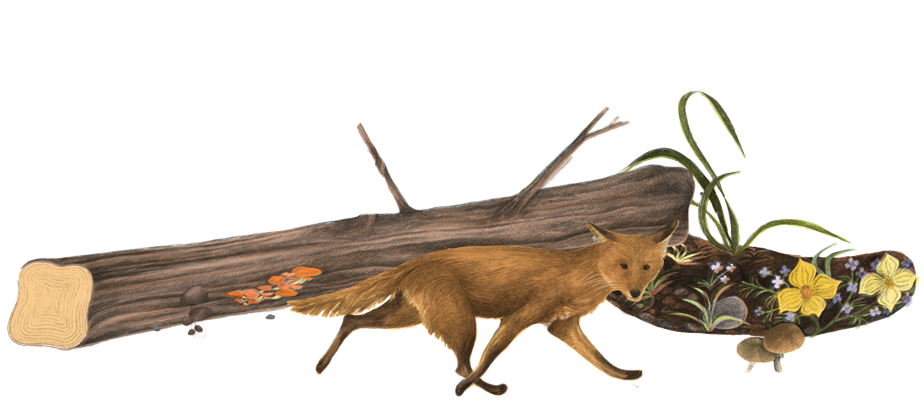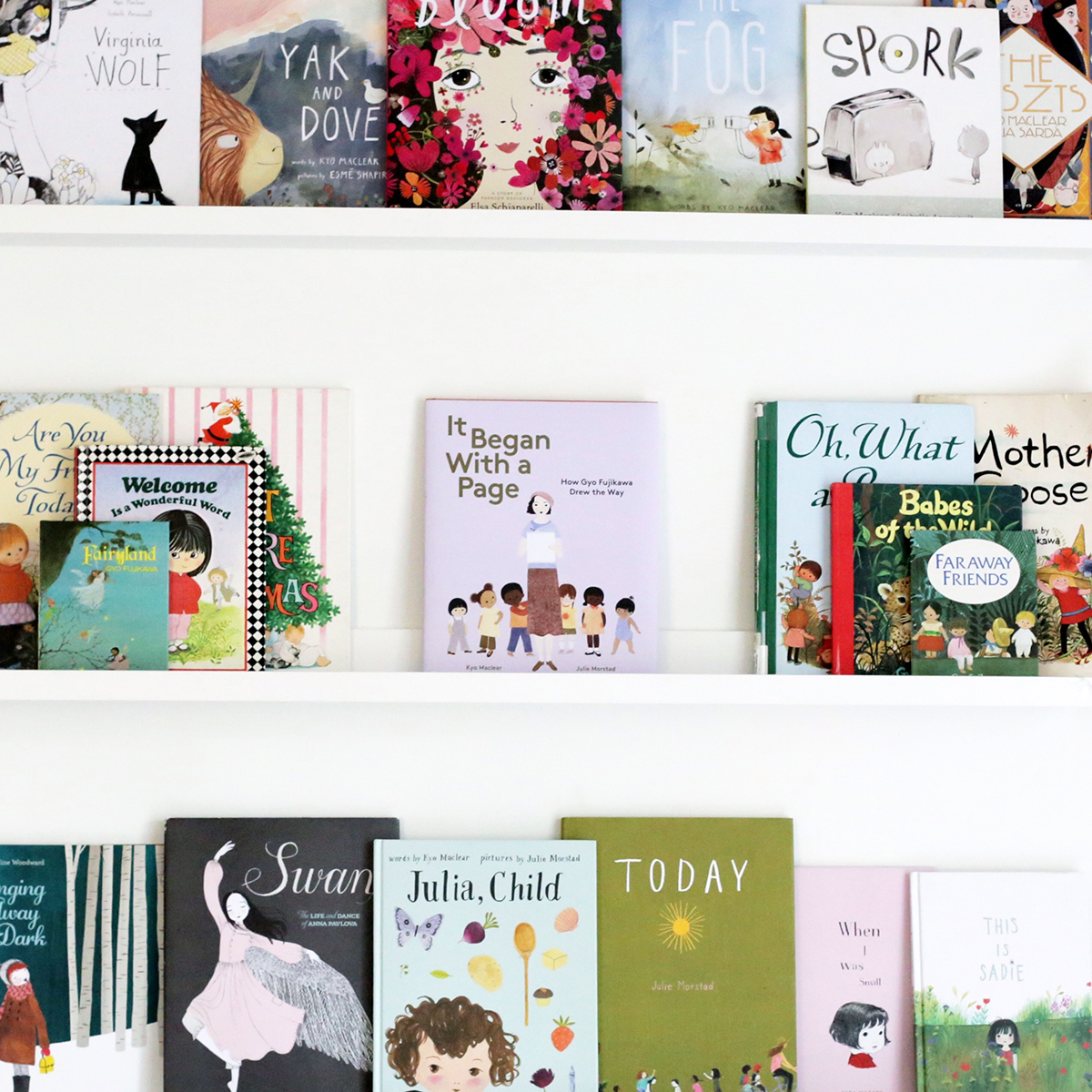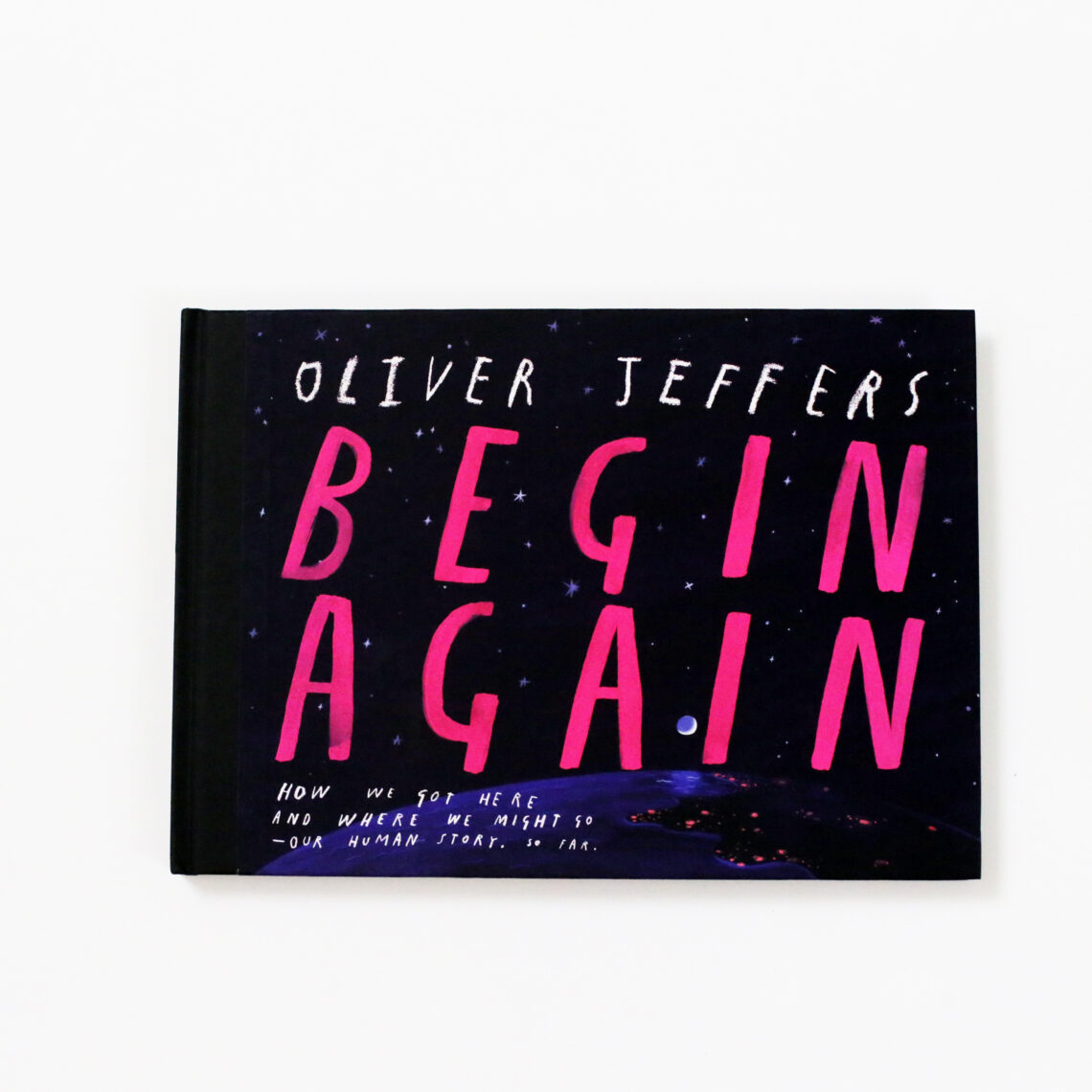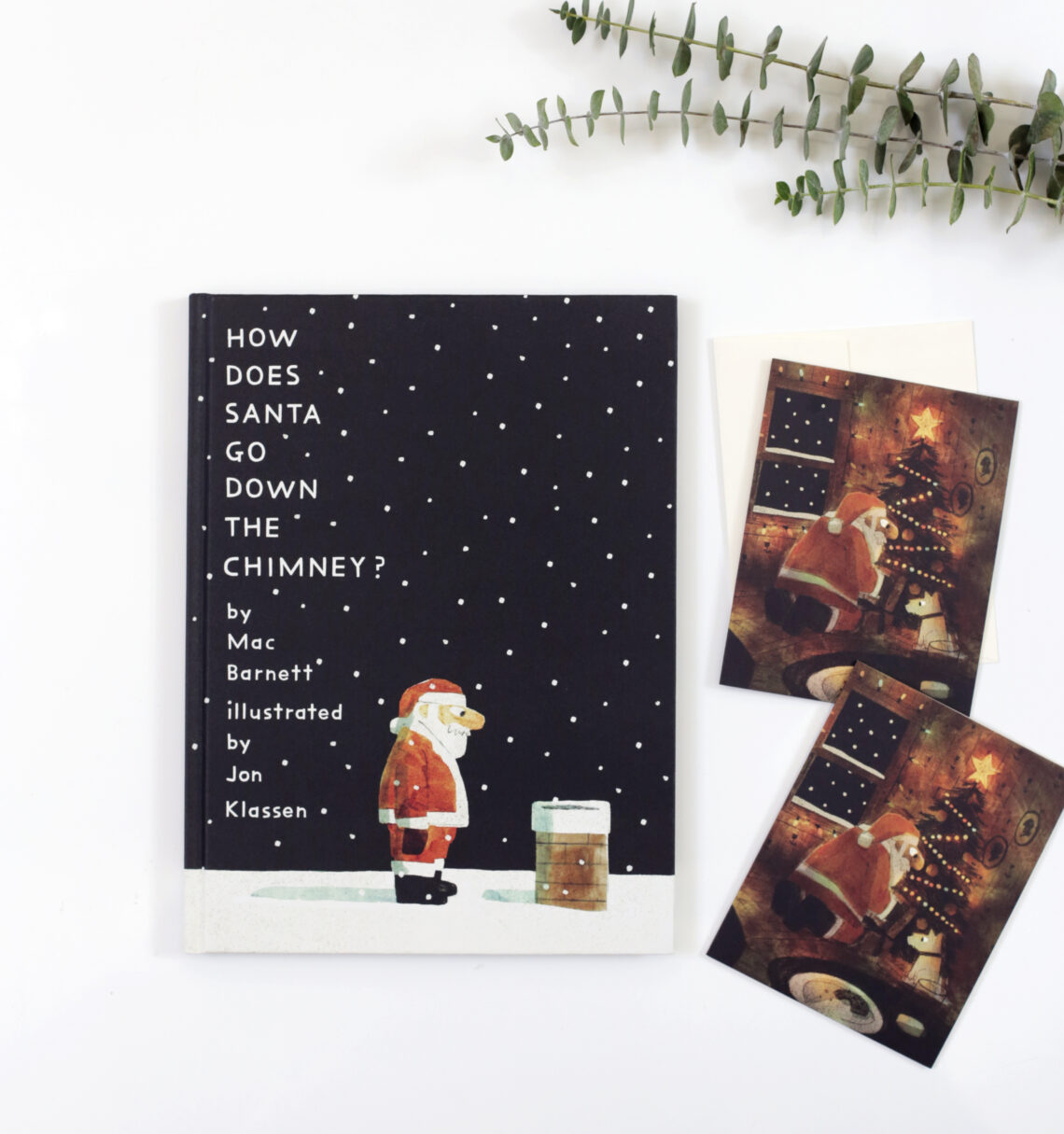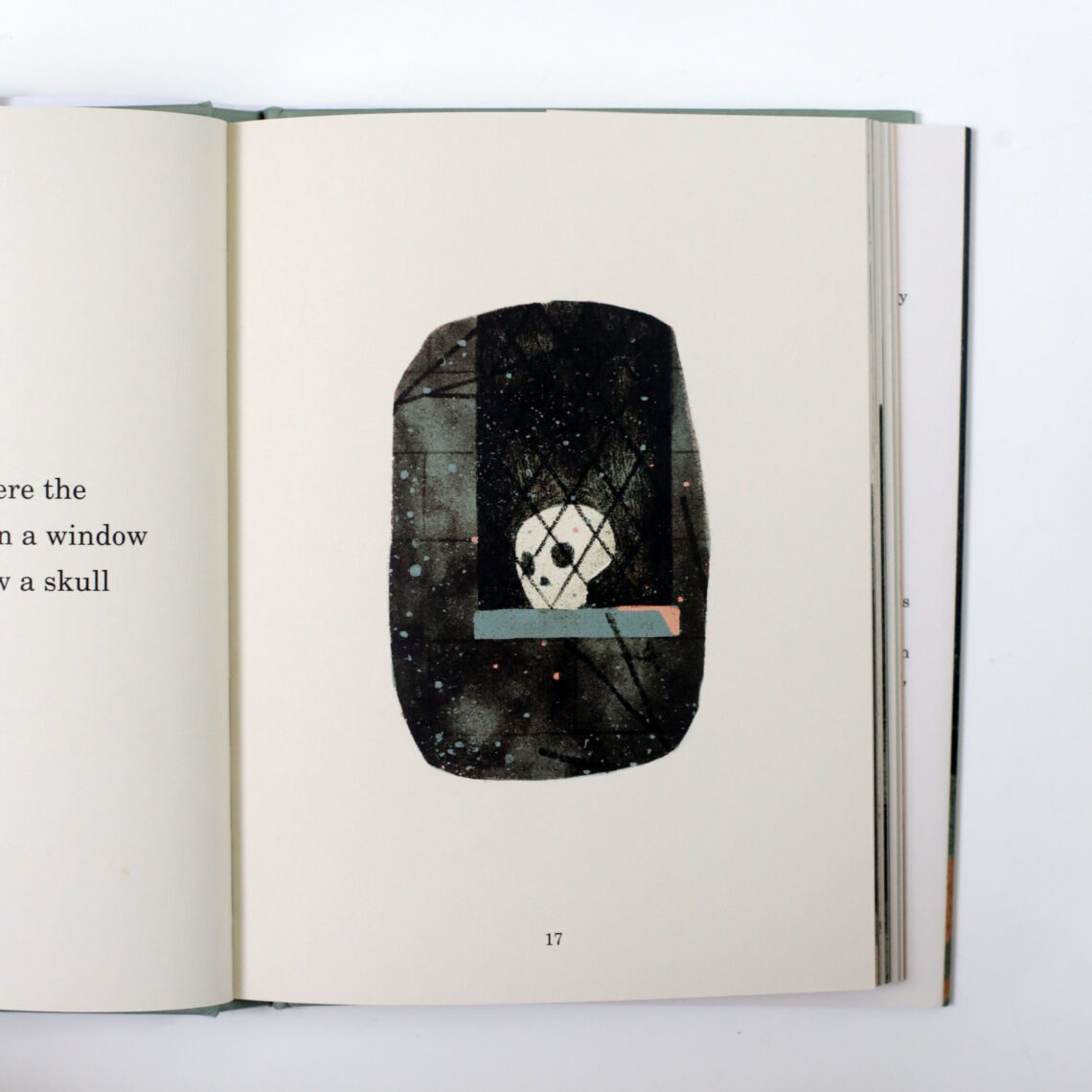I am far from being successful (whatever that means), but I am ever so grateful to small readers who find ‘something’ in any book of mine.” Fujikawa
Growing up Japanese-American, Gyo Fujikawa faced rasicm daily yet her work reflected light and beauty which still fills our bookshelves today. Julie Morstad and Kyo Maclear have honoured her memory and work in a way that no two other artits could. Kyo’s prose and Julie’s pencil come togther to share a book about a trailblazing woman whose influnce can still be seen in the picture book makers we love today. I asked Julie and Kyo about thier new book and about working in the picture book making industry.
Gyo didn’t have a wonderful childhood, it was full of adversity growing up Japanese-American in the United States around the 1920s. Being the incredible human she was, she found a way to create scenes and stories of childhood that are blissful to enjoy.
Did you find pieces of yourself in her story?
Julie: I certainly feel connected to Gyo in her delight in beauty, love of drawing, of art, plants and children.
Our upbringings were so different but I do feel like we maybe would have had a shared feeling of still being a kid deep down. But maybe we all feel like that …
Kyo: The incredible thing about a particular life, and the story of that life, is all the lives that connect to it. Even though Gyo was born at the beginning of the 20th century, there were aspects of her experience that chimed with me–namely the experience of an immigrant family balancing their dreams with their fears; the sense of otherness Gyo felt attending all white schools (which was also my experience); the stubbornness to continue despite obstacles.
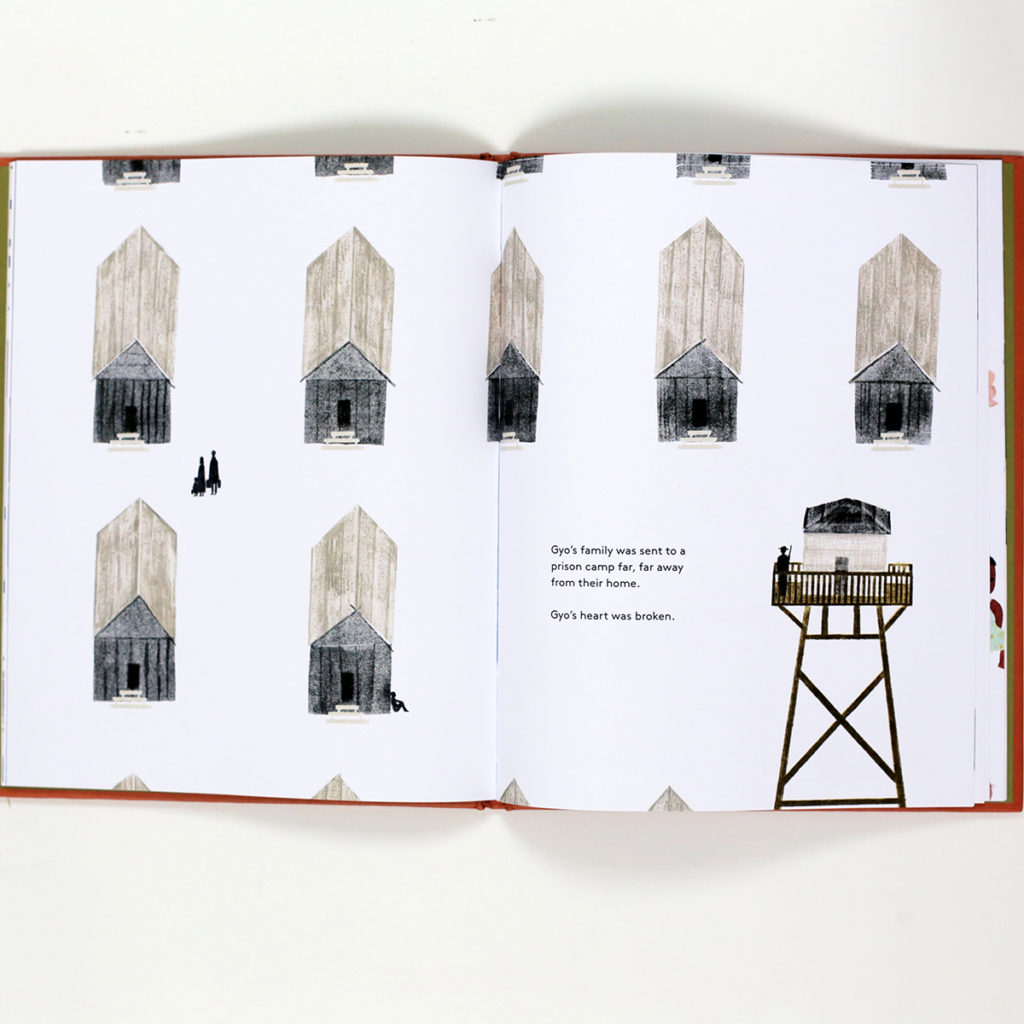
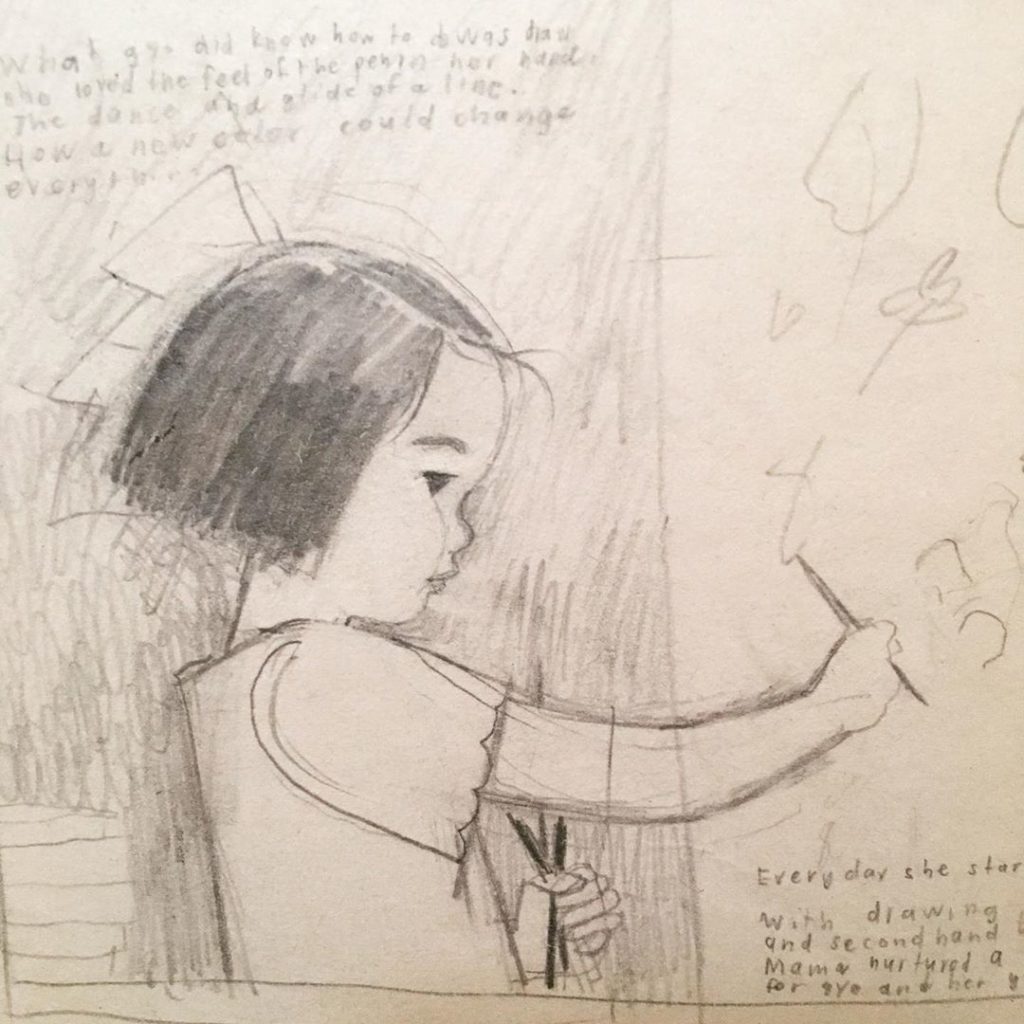
Although Gyo’s work is well-loved and continues to fill children’s book shelves today, her work wasn’t as appreciated her in time. Do you think that the picture book makers of today are in general appreciated more because of social media or do you think there are artists out there still flying under the radar?
Julie: I think children always loved and responded to her work, as shown by the amount of books that were sold, but yes I agree that people didn’t register who she was. There wasn’t the medium for that to happen. And her being a Japanese-American woman also made her less visible.
I don’t think people fly under the radar like that anymore. The culture now almost seems to ask that picture book makers (or just anyone making anything) be brands or personalities. I don’t love that, but it’s cool that people can if they want to do that … haha I can be pretty cynical and grinchy about social media!
Kyo: Gyo always insisted she was a commercial artist not a fine artist. I think part of this was humility but part of it was her work-a-day ethos. Children’s publishing wasn’t celebrity driven when she started
publishing so picture book makers were often unknown figures. Their books were known and might sell very well (Gyo’s book BABIES and BABY ANIMALS together sold nearly two million copies) but their creators
were far from household names. As you say, they didn’t benefit from the signal boost of social media. Of course, there were a few ‘auteurs’ in the 1950s and 60s but even someone as now-famous as Maurice Sendak would have worked in comparative quiet. So many of our most beloved writers/illustrators from those “golden days” also had a side hustle—say, doing commercial illos, creating ad campaigns, window-dressing, making greeting cards—because book advances simply did not (and arguably still do not) cover the cost of living.
I think Gyo’s obscurity is partly a product of her times but I think it was deepened by race and gender discrimination. Despite good intentions in the publishing and scholarly worlds, it takes a stubborn
durational effort to challenge the long history of marginalizing particular lives and life’s work. This still holds true. The radar (as you say) doesn’t always range as widely as it could. I’m thinking here
of artists producing quieter, more eccentric, sometimes overlooked work. That’s why bloggers really matter!
Gyo fought for her ideas which included diversity in the children she illustrated and she fought for the royalties of her work. People don’t always get a chance to see this side of the industry, I think a lot of
people fantasize about picture bookmakers. You have worked with Julie on previous books, three about incredible women.
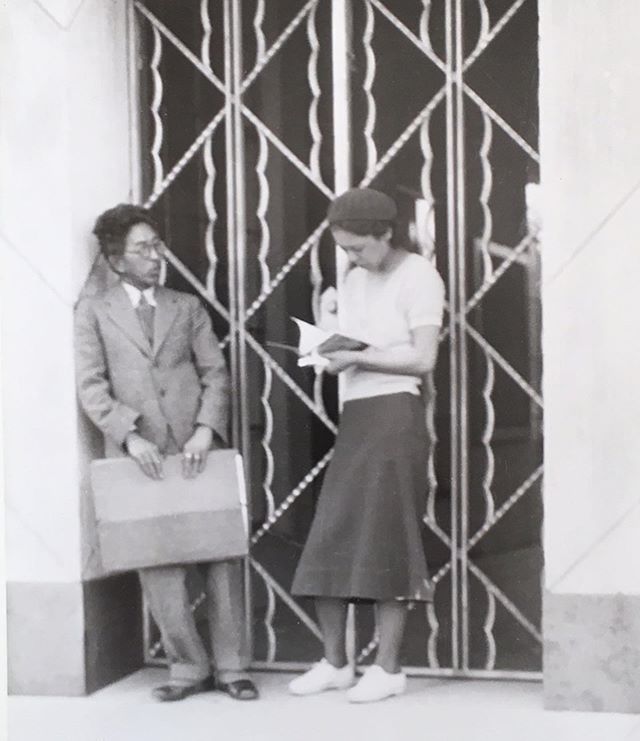
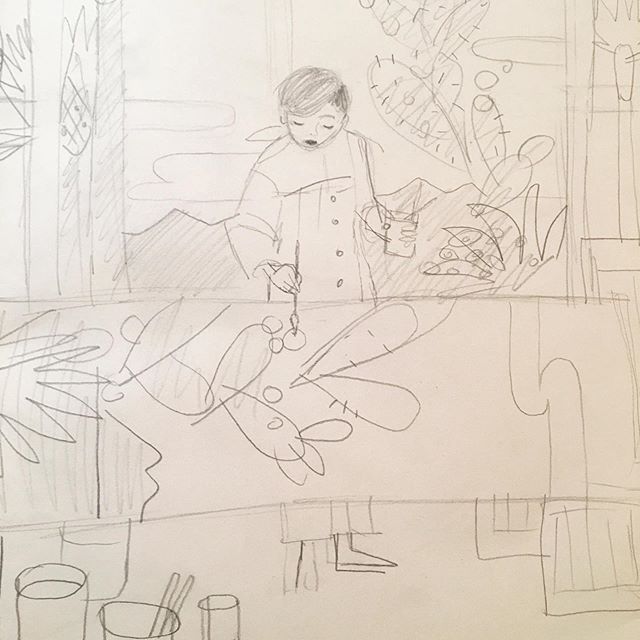
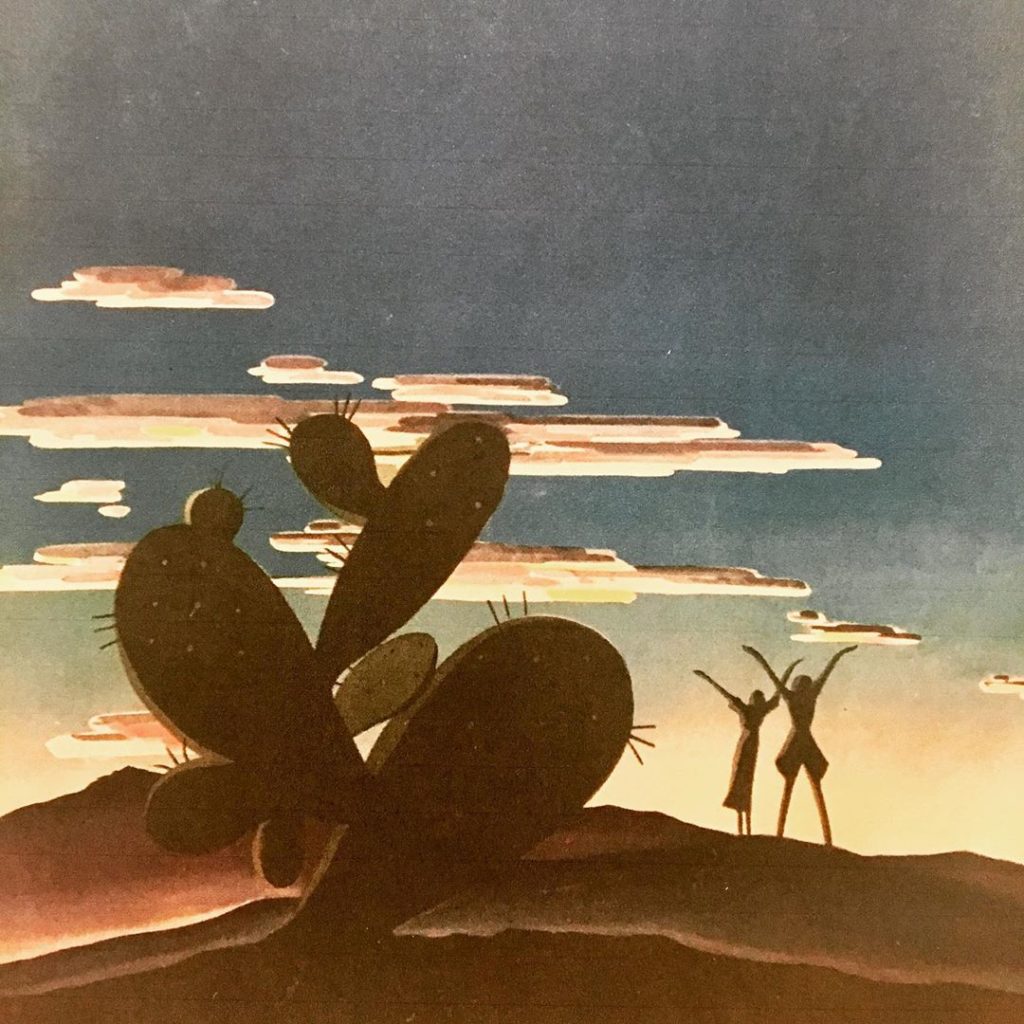
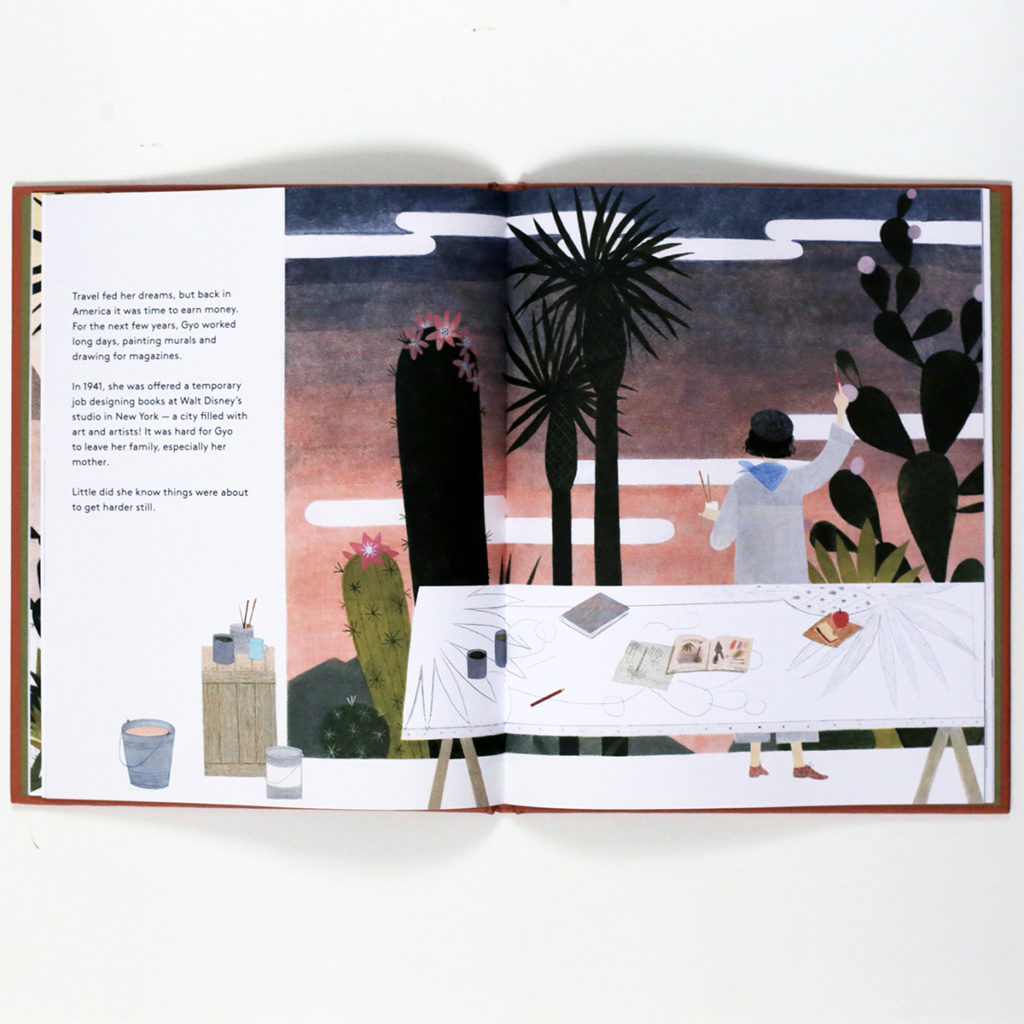
Is there a pattern here? Working for ideas in publishing isn’t easy, how do you advocate for the work you are passionate about?
Julie: I think we both felt so connected to those women through their work that we just HAD TO explore and tell their stories. We were so lucky to work with publishers and editors who felt the same.
Kyo and I get really excited about a lot of the same things and have many shared sensibilities.
We will work together again but I think we will go somewhere else next time – but you never know…lots can happen over a cup of tea or two.
Working for ideas in publishing isn’t easy, how do you advocate for the work you are passionate about?
Julie: I guess I have been lucky to connect with people in publishing who were excited about the same topics.
Kyo: You’re right, Gyo was exemplary. Julie and I had a chance to visit her archive in Los Angeles and one of the things that struck both of us was her meticulous bookkeeping. Then I realized, it had to be that
way! Gyo was a single Asian American woman who arrived in New York City in the 1940s, supporting herself at a time when the industry wasn’t always hospitable to racialized women. She was also the
daughter of a labor activist–her mother, Yu, campaigned for migrant worker rights and joined the International Defense League in 1930, defying threats from her husband that he would kick her out of the
house if she continued to associate herself with left-wing causes. Because of her mother, Gyo grew up with an unwavering sense of social justice that became a compass for her work.
I’m drawn to women who openly defy expectations and decorum. In different ways, Julia Child, Elsa Schiaparelli and Gyo Fujikawa were all creative rabble rousers. There are so many worthwhile biographies
to share with young people and the trick is finding a publisher with the foresight and unconventional vision to stand by lesser known stories. Julie and I have had a deep and gorgeous ally in Tara Walker at Tundra. On our last two books, we were also supported by Jill Davis at HarperCollins.
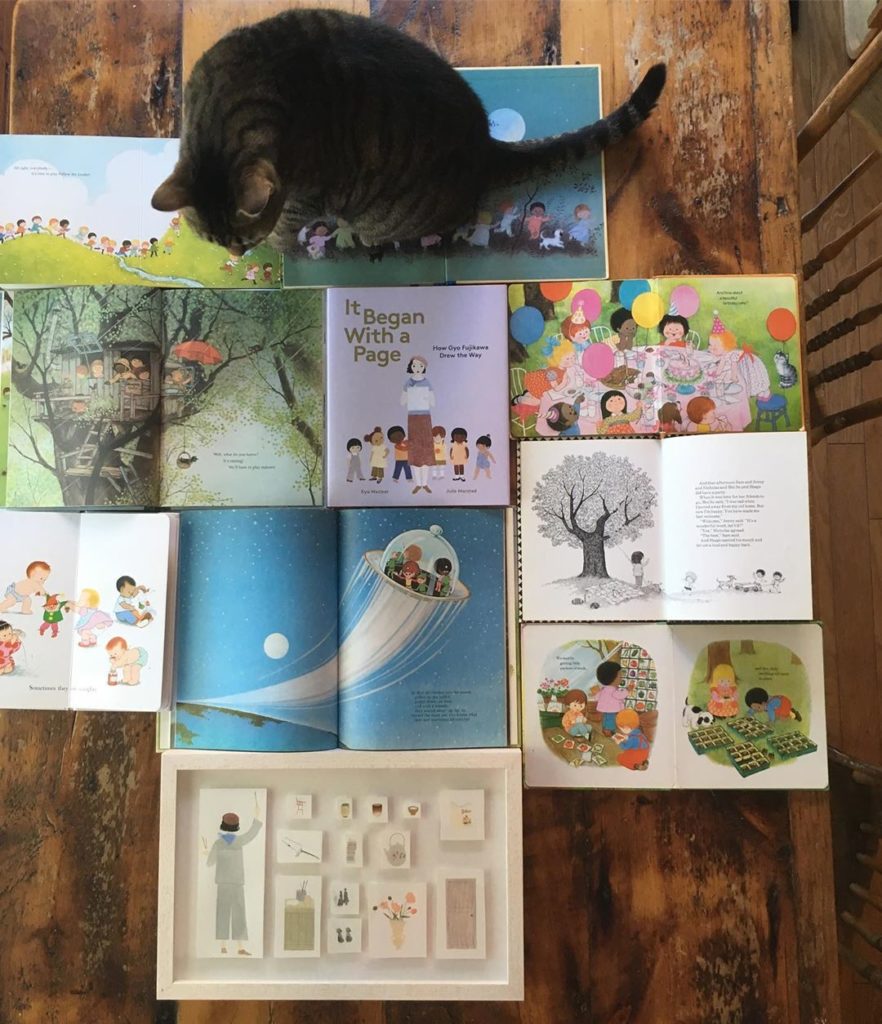
How do you imagine Julie while she works? You may know or have seen her in action but if you could imagine her at her most inspired, what do you think that looks like?
Kyo: Julie is hilariously humble and this is part of her practice. There is a beautiful and almost baffling egolessness to her. She doesn’t approach a project with an imperious pre-set method. Every story is a creative experiment. I’ve caught glimpses of her research walls and the palette studies she places around her studio. She prostrates herself to inspiration and stays completely receptive to the world. A true artist.
How do you imagine Kyo while she works? You may know or have seen her in action but if you could imagine her at her most inspired, what do you think that looks like?
Julie: In a forest glade with hummingbirds and butterflies around. Let’s have her in a loose white cotton dress 😉
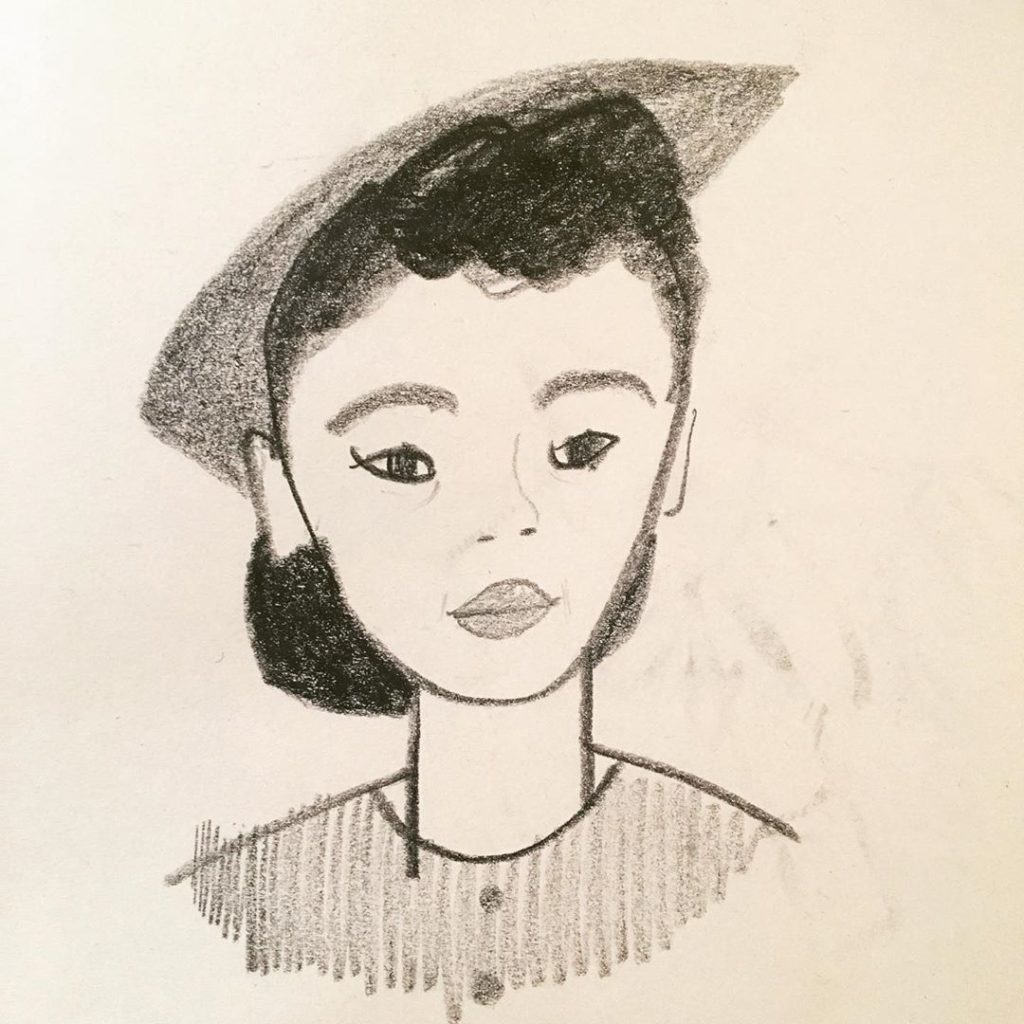
Many of Gyo’s illustrations are dreamy glimpses of nature that make you want to jump in the page and live there.
If you could spend a day walking around in a picture book, what book or who’s work would that be?
Kyo: I would love to live in a book illustrated by Japanese illustrator Rokuro Taniuchi (1921–81), whose otherworldly work I first encountered through 50 Watts. Another book I would love to roam through is The Sea of Tea: Janusz Stanny, which I found on Julie Flett’s perfect blog.
Julie: Oh that’s a fun question! So many!
Currently any book by Evaline Ness or Jaqueline Ayer!
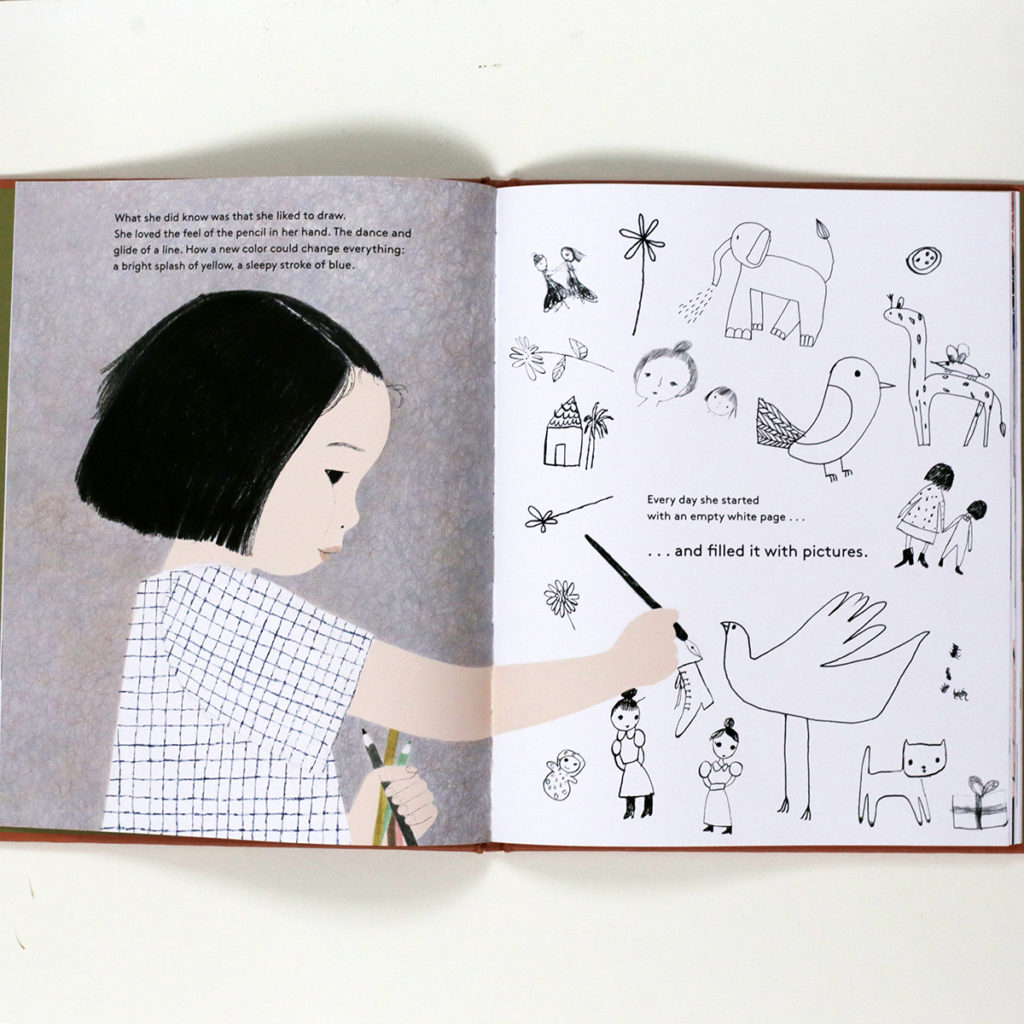
Suggest a book you think Julie would like but may not have read?
Kyo: Julie knows all the good books! She has the best collection. But maybe she doesn’t know “From Afar It Was An Island” by Bruno Munari. Beautifully titled and whimsically encyclopedic (in a way that reminds me of Julie).
Suggest a book you think Kyo would like but may not have read?
Julie: A picture book? I think we look at all the same ones!
I really want to re-read wide sargasso sea by Jean Rhys – maybe by some chance she hasn’t read it?
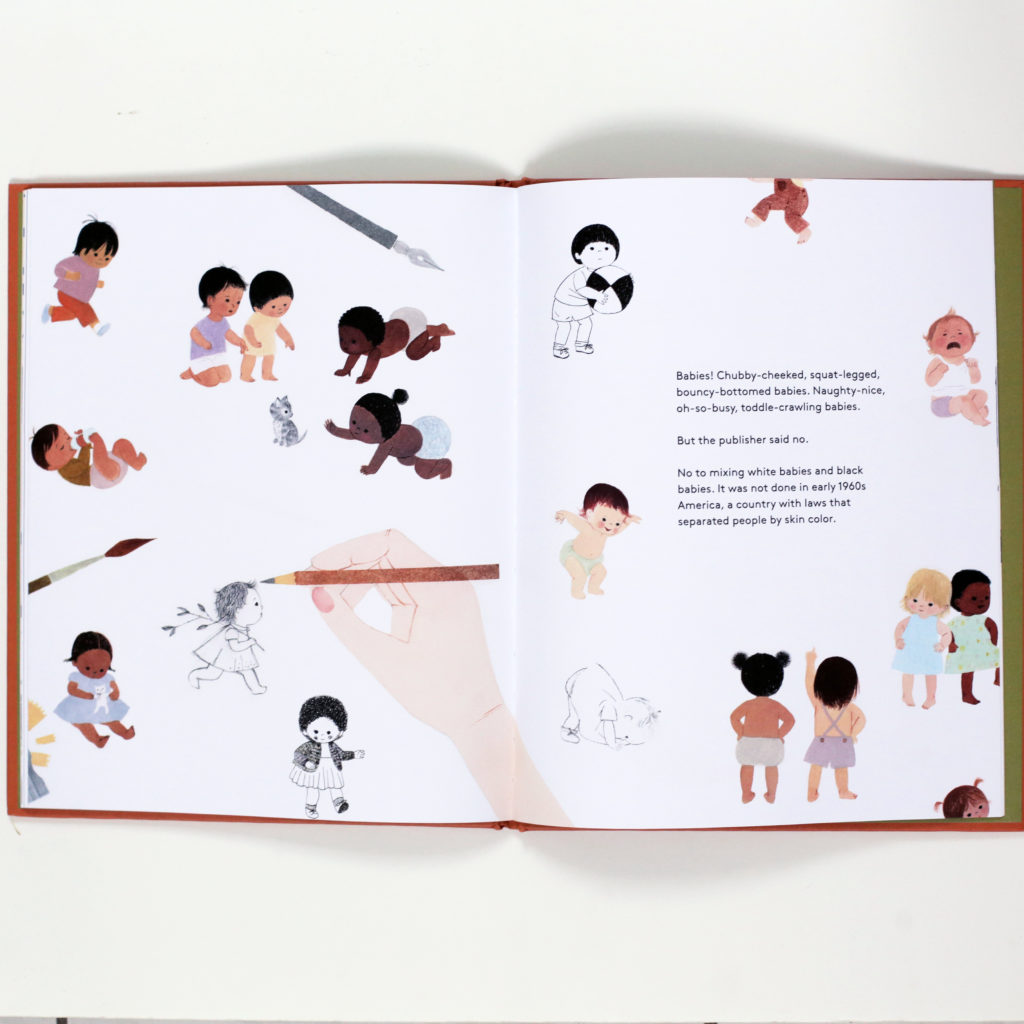
Do you feel that nature influences your art? Or do you have a favorite spot in nature that inspires you?
Julie: I love being beside the ocean, on the sand or on some worn-smooth rocks, with tall grass, maybe sand dunes…I’ll have the loose white cotton dress too.
Follow Julie here or find her here and you can follow Kyo here or find her here.
